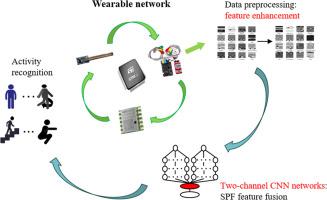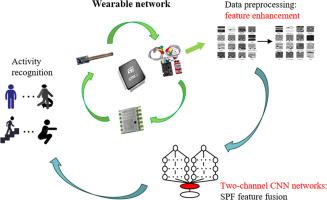PDCHAR: Human activity recognition via multi-sensor wearable networks using two-channel convolutional neural networks
Abstract
Realizing human activity recognition is an important issue in pedestrian navigation and intelligent prosthetic control. Utilizing miniature multi-sensor wearable networks is a reliable method to improve the efficiency and convenience of the recognition system. Effective feature extraction and fusion of multimodal signals is a key issue in recognition. Therefore, this paper proposes an enhanced algorithm based on PCA sensor coupling analysis for data preprocessing. Subsequently, an innovative two-channel convolutional neural network with an SPF feature fusion layer as the core is built. The network fully analyzes the local and global features of multimodal signals using the local contrast and luminance properties of feature images. Compared with traditional methods, the model can reduce the data dimensionality and automatically identify and fuse the key information of the signals. In addition, most of the current mode recognition only supports simple actions such as walking and running, this paper constructs a database containing sixteen states by building a network with inertial sensors (IMU), curvature sensors (FLEX) and electromyography sensors (EMG). The experimental results show that the proposed system exhibits better results in complex action recognition and provides a new scheme for the realization of feature fusion and enhancement.



 求助内容:
求助内容: 应助结果提醒方式:
应助结果提醒方式:


